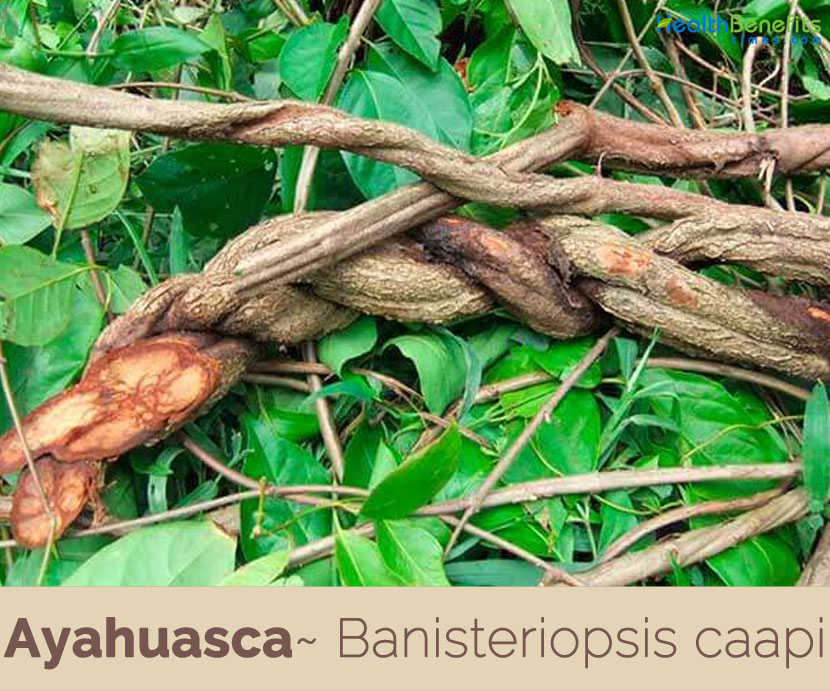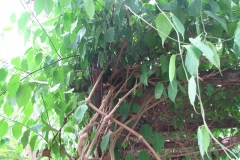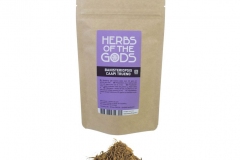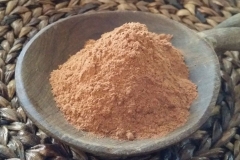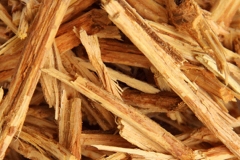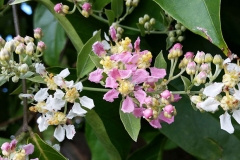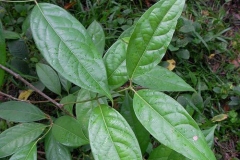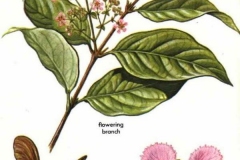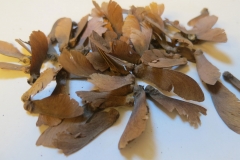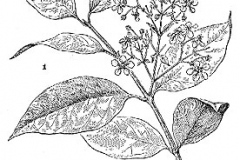| Ayahuasca Quick Facts | |
|---|---|
| Name: | Ayahuasca |
| Scientific Name: | Banisteriopsis caapi |
| Origin | Amazon and Orinoco river basins |
| Shapes | Samara with the dorsal wing 18-42 mm long and 8-22 mm wide |
| Taste | Bitter |
| Health benefits | Treatment of anxiety, addiction, PTDS, and depression, Mindfulness, Helps clear the gut and digestive tract of worms and parasites, Mood and Emotions, Reduces depression, Support cancer treatments, PTSD, Parkinson’s disease |
| Name | Ayahuasca |
|---|---|
| Scientific Name | Banisteriopsis caapi |
| Native | Amazon and Orinoco river basins |
| Common Names | Ayahuasca, jagube, caapi or yagé |
| Name in Other Languages | Afrikaans: Ayahuasca Albanian: Ayahuasca Amharic: Ayahuasca (īəˈwäskə) Arabic: Naba’at banistiriubsis kabi (نبات بانيستيريوبسيس كابي), Ayahwaska Armenian: Ayahuasca (īəˈwäskə) Azerbaijani: Ayahuasca Bengali: Ayahuasca Bulgarian: Ayakhuaska (аяхуаска) Burmese: Ayahuasca Chinese: Ā yà wǎsī kǎ (阿亚瓦斯卡) Croatian: Ayahuasca Czech: Ayahuasca Danish: Ayahuasca Dutch: Ayahuasca English: Ayahuasca, Soulvine, jagube, caapi, yage Esperanto: Kaapio, ayahuasca Estonian: Amasoonase kaapiväät, ayahuasca Filipino: Ayahuasca Finnish: Amazoninajahuaskaliaani, ayahuasca French: Ayahuasca Georgian: Aiahask’a (აიაჰასკა) German: Ayahuasca Greek: Ayahuasca Gujarati: Āhu āskā (આહુઆસ્કા) Hausa: Ayahuasca Hebrew: Ayahuasca Hindi: Ayahuasca Hungarian: Ayahuasca Icelandic: Ayahuasca Indonesian: Ayahuasca Irish: Ayahuasca Italian: Ayahuasca Japanese: Banisuteriopushisu kāpi (バニステリオプシス・カーピ), Ayawasuka (アヤワスカ) Javanese: Ayahuasca Kannada: Ayāhuvāskā (ಅಯಾಹುವಾಸ್ಕಾ) Kazakh: Aĭakhuaska (айахуаска) Korean: A yahu aseuka (아 야후 아스카) Kurdish: Ayahuasca Lao: Ayahuasca Latin: Ayahuasca Latvian: Ayahuasca Lithuanian: Svaigusis kvaitulis, ayahuasca Macedonian: Ajahuaka (Aјахуака) Malagasy: Ayahuasca Malay: Ayahuasca Malayalam: Ayahuasca Maltese: Ayahuasca Marathi : Ayaahuska (अयाहुस्का) Mongolian: Aakhuaska (аахуаска) Nepali: Ayaahuska (अयाहुस्का) Norwegian: Ayahuasca Oriya: Ayahuasca Pashto: Ayahuasca Persian: Ayahuasca Polish: Ayahuasca Portuguese: Caapi, Jagube, yage, Cipo mariri, capi, cabi, nepa, tenua, ayahuasca Punjabi: Ayahuasca Quechua: Ayawaska Romanian: Ayahuasca Russian: Ayakhuaska (аяхуаска) Serbian: Aiahuasca (аиахуасца) Sindhi: ايائواسا Sinhala: Ayahuasca Slovenian: Ayahuasca Spanish: Ayahuasca, Yagé Sundanese: Ayahuasca Swedish: Ayahuasca Tajik: Aĭakhaska (айахаска) Tamil: Ayahuasca Telugu: Ayahuasca Thai: Ayahuasca Turkish: Ayahuasca Ukranian: Ayauaska (аяуаска) Urdu: آیوہاسکا Uzbek: Ayahuasca Vietnamese: Ayahuasca Welsh: Ayahuasca Zulu: Ayahuasca |
| Plant Growth Habit | Giant woody, climbing vine or shrub |
| Soil | Thrives in humus-rich and moist soil with lots of water |
| Plant Size | Up to 30 m (98 ft) in length |
| Stem | Sericeous to glabrate |
| Leaf | Opposite, green, oval-shaped, pointed and smooth |
| Flower | Smallish (12-14mm in diameter and 2.5-3mm long) with a white to pinkish color when in full bloom |
| Seed Shape & Size | Small fan-like seeds |
| Seed Color | Green in color when fresh and fade to a brown when dried |
| Propagation | By seed and cutting |
| Plant Parts Used | Bark |
| Taste | Bitter |
| Health Benefits |
|
Plant Description
Ayahuasca is a giant woody, climbing vine or shrub which normally grows up to 30 m (98 ft.) in length. The plant thrives in humus-rich and moist soil with lots of water. Stems are sericeous to glabrate twining itself round other plants for support. In the Quechua language, spoken in Peru and neighboring countries, ayahuasca means “spirit of the dead,” representing the powers attributed to this plant.
Leaves
Lamina of the leaves are 4.8-20.5 cm long, 2.5-11.5 cm wide, ovate, obtuse to truncate at the base, short- to long-acuminate at the apex. It is glabrate above and sparsely sericeous to glabrate below, bearing 2-5 pairs of sessile glands below near or at the margin and another pair near the midrib at the base. Petiole is 9-25 mm long, sparsely sericeous to glabrate, eglandular or biglandular near the apex. Stipules are 0.5-1 mm long and triangular.
Flowers
Inflorescence is an axillary cyme of 4-flowered umbels, sparsely tomentose to velutinous. The bracts and bracteoles are 1-1.8 mm long, deciduous before or during anthesis, rarely immediately afterwards. Pedicel is 7-11 mm long, sessile, appressed- or tomentose-sericeous. Sepals are abaxially sericeous, adaxially minutely tomentose, all eglandular or the lateral 4 biglandular, the glands 0.5-2.2 mm long. Petals are pale pink, becoming pale yellow in age, glabrous, fimbriate, the lateral 4 with the claw 1-1.5 mm long, the limb is 5-8.5 mm long and 4-6 mm wide, the posterior petal with claw 2.5-3 mm long, constricted at the apex, the limb 5-7 mm long, 2.5-4.5 mm wide, broadly obovate, the basal fimbriae gland-tipped. Filaments are 2-4 mm long, the posterior 3 inflexed between the posterior styles; anthers with the locules sparsely pilose to glabrate, 0.3-1.2 mm long, the connectives 0.2-1.6 mm long, the anterior 5 longest and glandular, those of the anthers opposite the antero-lateral sepals exceeding the locules by 0.5-1 mm. Anterior style 2.8-3.2 mm long, straight, the posterior styles 3-4 mm long, diverging and lyrate at the base, the stigmas capitate.
Fruits
Samara (Fruit) is appressed-pubescent to glabrate, with the dorsal wing 18-42 mm long and 8-22 mm wide, bearing a rounded tooth at the adaxial base; nut bearing prominent ribs on the side perpendicular to the areole, rarely with a short aculeate outgrowth, the locule hairy within.
History
First mention of Ayahuasca comes from early Spanish and Portuguese explorers and missionaries who visited South America in the 16th century, describing ayahuasca brews as “diabolic” and dangerous decoctions.
Although utilized among the indigenous tribes of South America for hundreds and perhaps even thousands of years, Ayahuasca was not recognized by westerners until 1851, when Richard Spruce, an English botanist, described it as a new species. He observed how Guahibos, the indigenous people of Llanos (Venezuela), chewed the bark of Ayahuasca instead of brewing it as a drink.
Types of Ayahuasca
There are two scientifically accepted varieties:
- Banisteriopsis caapi var. “caupuri” with knotty stems
- Banisteriopsis caapi var. “tukunaka” with smooth stems
The Ayahuasca vine is considered by those who use it into several different types, each of which have different potencies, effects, and uses. Different categorizations may be used in different areas, and this list is not meant to be exhaustive or universally applicable.
Health benefits of Ayahuasca
There is numerous health benefits related with Banisteriopsis Caapi. Choose among these options for what purpose you would like to have it!
1. Treatment of anxiety, addiction, PTDS, and depression
Several researches have revealed that Ayahuasca helps people dealing with addiction, depression, and PTSD. In addition, a study showed that people taking just one dose of Ayahuasca presented significant progress compared to the people in the control group.
Also, more studies reveal that Ayahuasca has positive effects when addressing anxiety, drug addiction, and mood disorders. As a result, people who are looking to heal and improve their life, turn to Ayahuasca retreats as a natural approach to treatment.
In a study, 12 people dealing with severe behavioral and psychological problems connected to substance abuse participated in a program for four days. The program included 2 Ayahuasca ceremonies. Six months later, they’ve shown incredible improvements in terms of hopefulness, mindfulness, empowerment, and quality of life on all levels. Moreover, they reduced the consumption of tobacco, alcohol, and cocaine. Even if more research is required, scientists assume that Ayahuasca can also benefit people dealing with PTSD.(1)
2. Mindfulness
If you are struggling with a lot of pressure and need to be mindful to focus on your tasks and errands that you have to run, then Ayahuasca is the best option. Research suggests that Banisteriopsis Caapi (ayahuasca) can help increase the brain’s mindful capacity, thus supporting our psychological well-being.
3. Helps clear the gut and digestive tract of worms and parasites
The harmala alkaloids found in ayahuasca are anti-parasitic agents that chemically kill the parasites without harming the individual. These antimicrobial agents also kill bacterial organisms such as E. coli, Salmonella, and yeast. Thus using Ayahuasca in the limited amount can be quite beneficial for eliminating parasites and other antimicrobial agents.
4. Mood and Emotions
If you have been dealing with a negative state of mind or worthless mood lately, then you can definitely try Ayahuasca. It can provide you a great relief. According to research, Banistriopsis caapi (Ayahuasca) has a positive effect on mood and emotional regulation.
5. Reduces depression
Ayahuasca increases blood flow to the frontal and para-limbic regions of the brain that are related with emotion processing and motivation. Similar to pharmaceutical antidepressants, this medicinal brew stimulates serotonin receptors, thus changing concentrations of the mood-boosting neurotransmitter in the brain. According to clinical research, ayahuasca had fast and continued antidepressant effects; even in recurring cases.
6. Support cancer treatments
However, this still needs to be further researched. There is very few research available regarding the safety and efficiency of ayahuasca as a cancer treatment because legal restrictions make these studies difficult to proceed. In a Brazilian study conducted by Eduardo Schenberg of the University of Sao Paulo, the results showed that Ayahuasca actually has the potential to treat cancer. Schenberg wrote, “There is enough available evidence that ayahuasca’s active principles, especially DMT and harmine, have positive effects on some cell cultures used to study cancer, and in biochemical processes important in cancer treatment, both in vitro and in vivo”. Ayahuasca can increase the number of white blood cells that kill cancer cells. It can help kill cancer cells and suppress cancer cell growth by blocking glucose usage in cancer cells.
7. PTSD
If you have been to a shocking event and the site of it haunts you every time you think about it, you might be dealing with PTSD (Post Traumatic Stress Disorder). The research suggests that Banisteriopsis Caapi might help the victims of PTSD.
8. Parkinson’s disease
If you are a diagnosed patient of Parkinson’s disease or have some minor symptoms associated with it, there are some solid probabilities that Banisteriopsis Caapi can elevate your dopamine levels that are low in Parkinson’s disease. It’s a natural way of dealing with this psychological disorder. The research suggests that patients of Parkinson’s disease felt markedly different after being introduced to Banisteriopsis Caapi.
Traditional uses and benefits of Ayahuasca
- The bark leaves and twigs are the source of a beverage that is hallucinogenic.
- Commonly used in the Amazonian rainforest, it is used shamanically as a tool to contact the spirits and bring healing, and is also used recreationally.
- Shoots, roots and leaves, sometimes as an admixture with other species, are used by Indians for the preparation of a hallucinogenic beverage, used for special ceremonies or the roots and stems are chewed for this purpose.
- Dried leaves are also smoked.
- In addition to its use as a hallucinogenic, the plant is also emetic and purgative.
- At low doses it is used as a mild detoxifier.
Precautions
- Parts of plant are poisonous if ingested.
- It may cause Nausea and repetitive vomiting.
References:
https://www.itis.gov/servlet/SingleRpt/SingleRpt?search_topic=TSN&search_value=506424#null
http://www.hear.org/pier/species/banisteriopsis_caapi.htm
https://pfaf.org/user/Plant.aspx?LatinName=Banisteriopsis+caapi
https://plants.usda.gov/core/profile?symbol=BACA12
https://en.wikipedia.org/wiki/Banisteriopsis_caapi
https://npgsweb.ars-grin.gov/gringlobal/taxonomydetail.aspx?id=400033
https://enacademic.com/dic.nsf/enwiki/249363
https://www.wikidata.org/wiki/Q133573
https://davesgarden.com/guides/pf/go/127403/#b
https://gd.eppo.int/taxon/BAACA
http://www.theplantlist.org/tpl/record/kew-87028


